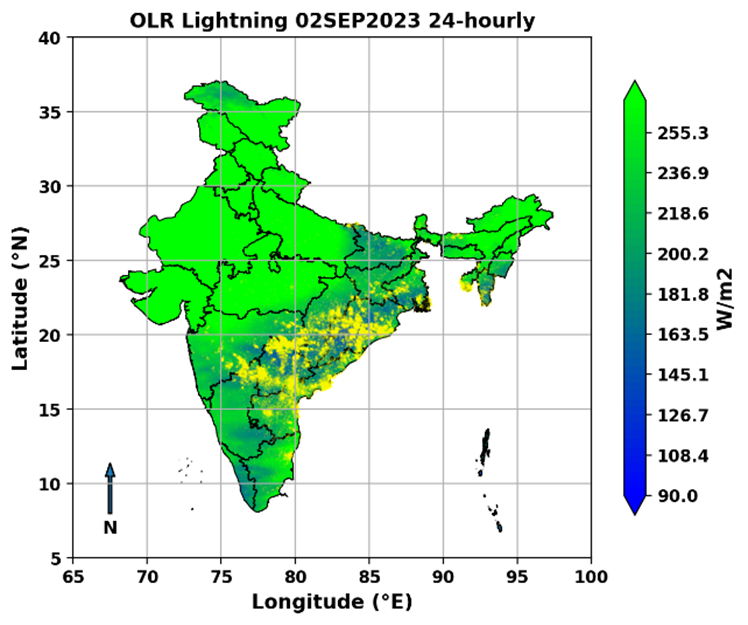SOURCE: ISRO


NRSC/ISRO achieves a breakthrough in the now-casting of the lightning events over India using data from Indian geostationary satellites. Atmospheric lightning occurs due to the complex interactions of meteorological parameters under the influence of convective processes in the troposphere. Key drivers of these convective phenomena include surface radiation, temperature, and wind.
Lightning now-casting assumes importance as lightning is a dominant natural hazard over the tropics. NRSC/ISRO researchers observed lightning signatures in the Outgoing Longwave Radiation (OLR) data from the INSAT-3D satellite. The reduction in OLR strength is an indicator for potential lightning occurrences. The near real-time observations from the INSAT series satellites were utilized to detect and identify signatures indicative of lightning occurrences.
To further enhance the detection of lightning activity, additional parameters such as Land Surface Temperature (LST) and wind were incorporated in the development of a composite variable to improve predictive accuracy. The developed composite variable effectively captures the variations in lightning activity observed by ground-based measurements. It provides a reliable indication of when lightning activity is likely to peak or subside, allowing for improved prediction of lightning occurrence and intensity. This composite variable enables the prediction of lightning occurrences with a lead time of approximately 2.5 hours.